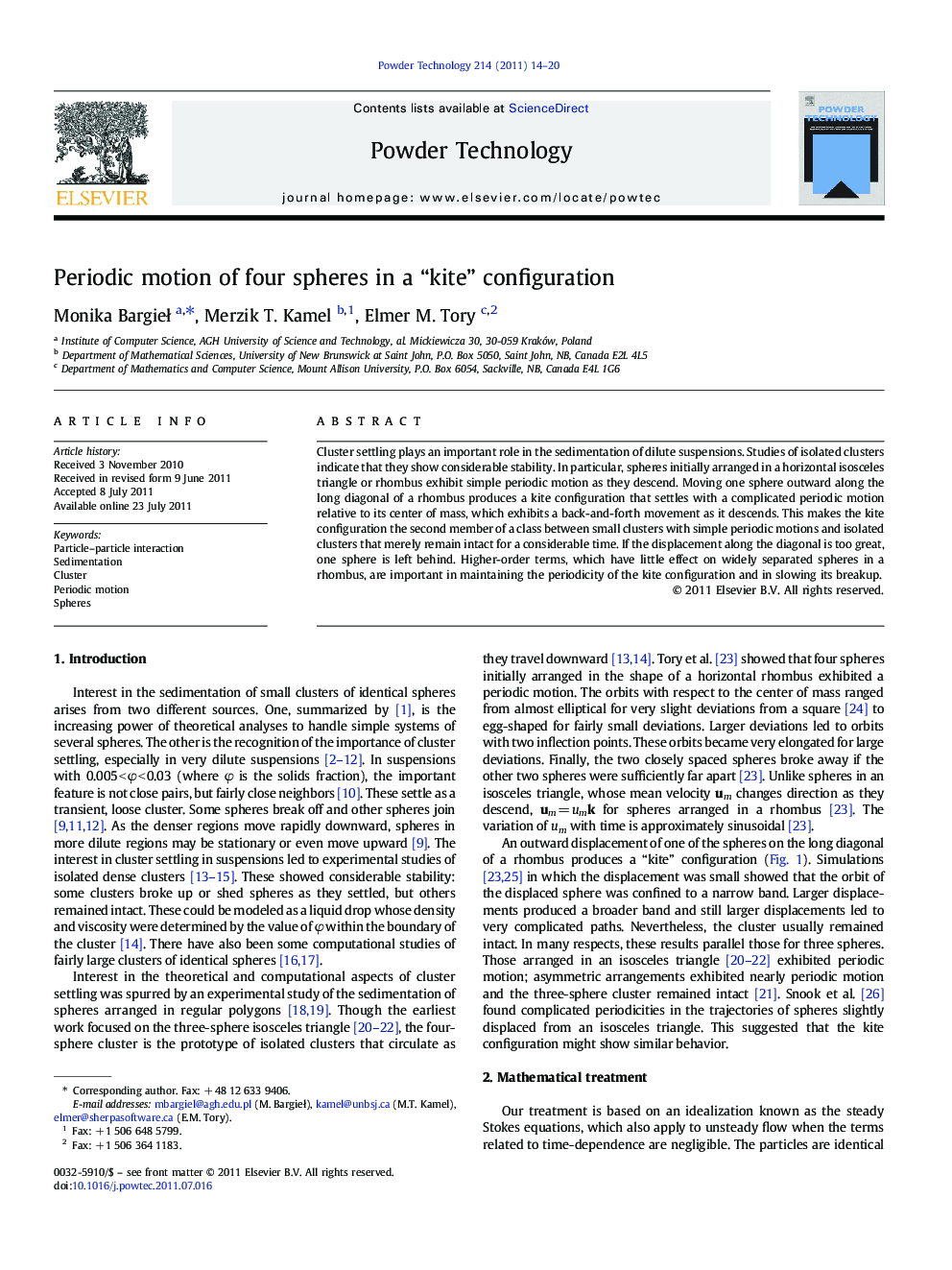| Article ID | Journal | Published Year | Pages | File Type |
|---|---|---|---|---|
| 237503 | Powder Technology | 2011 | 7 Pages |
Cluster settling plays an important role in the sedimentation of dilute suspensions. Studies of isolated clusters indicate that they show considerable stability. In particular, spheres initially arranged in a horizontal isosceles triangle or rhombus exhibit simple periodic motion as they descend. Moving one sphere outward along the long diagonal of a rhombus produces a kite configuration that settles with a complicated periodic motion relative to its center of mass, which exhibits a back-and-forth movement as it descends. This makes the kite configuration the second member of a class between small clusters with simple periodic motions and isolated clusters that merely remain intact for a considerable time. If the displacement along the diagonal is too great, one sphere is left behind. Higher-order terms, which have little effect on widely separated spheres in a rhombus, are important in maintaining the periodicity of the kite configuration and in slowing its breakup.
Graphical abstractThis figure shows the orbit, relative to the center of mass, of a sphere on the long diagonal of a kite formation. Starting from the far right, the sphere follows a complicated path that eventually repeats. The orbit of the other sphere on the long diagonal is the mirror image of this one.Figure optionsDownload full-size imageDownload as PowerPoint slideHighlights► Identical spheres situated at the vertices of a horizontal kite configuration settle with a complex periodic motion. ► The center of mass of the four spheres oscillates in the vertical plane of the long axis. ► Orbits relative to the center of mass best illustrate the complex periodicity. ► Higher-order interaction terms for the kite configuration are important even for widely spaced spheres.
